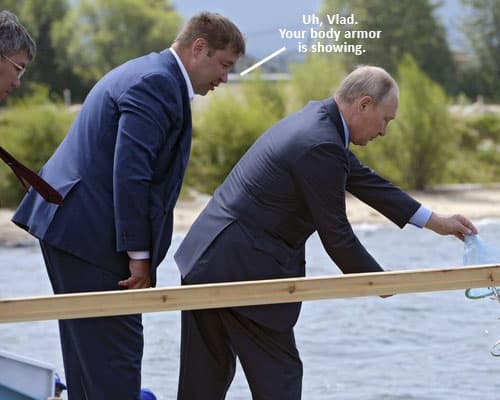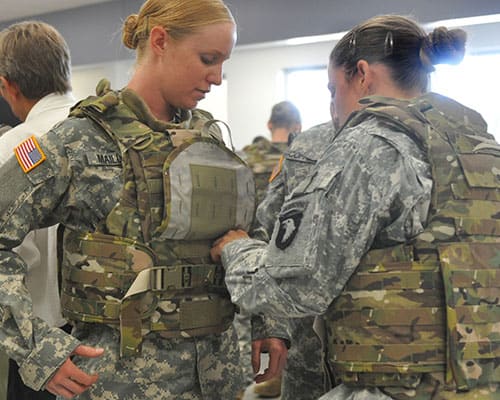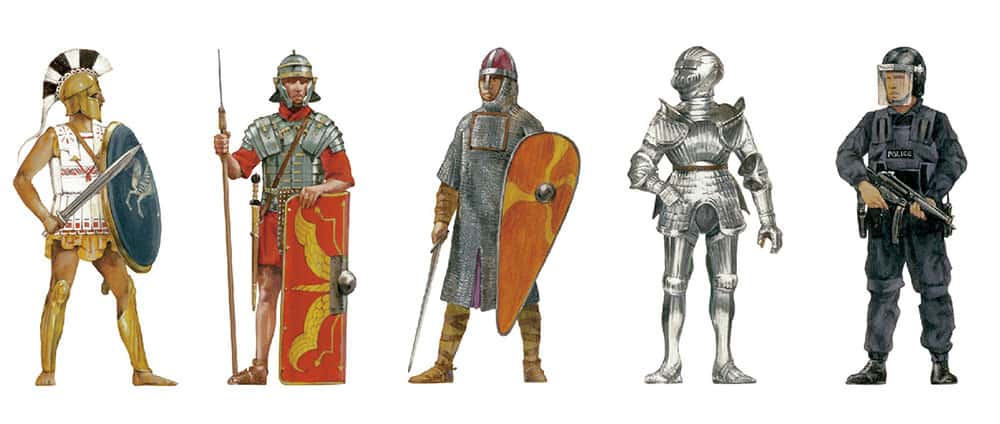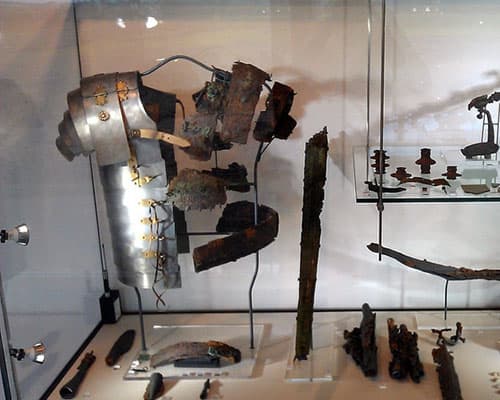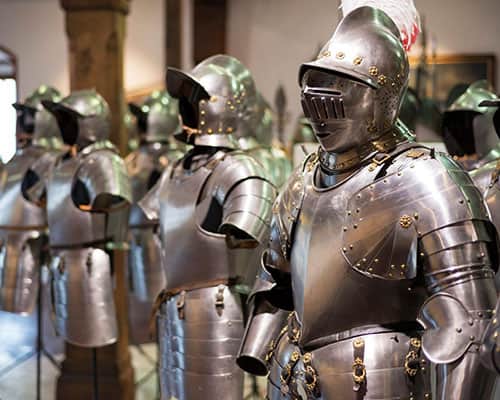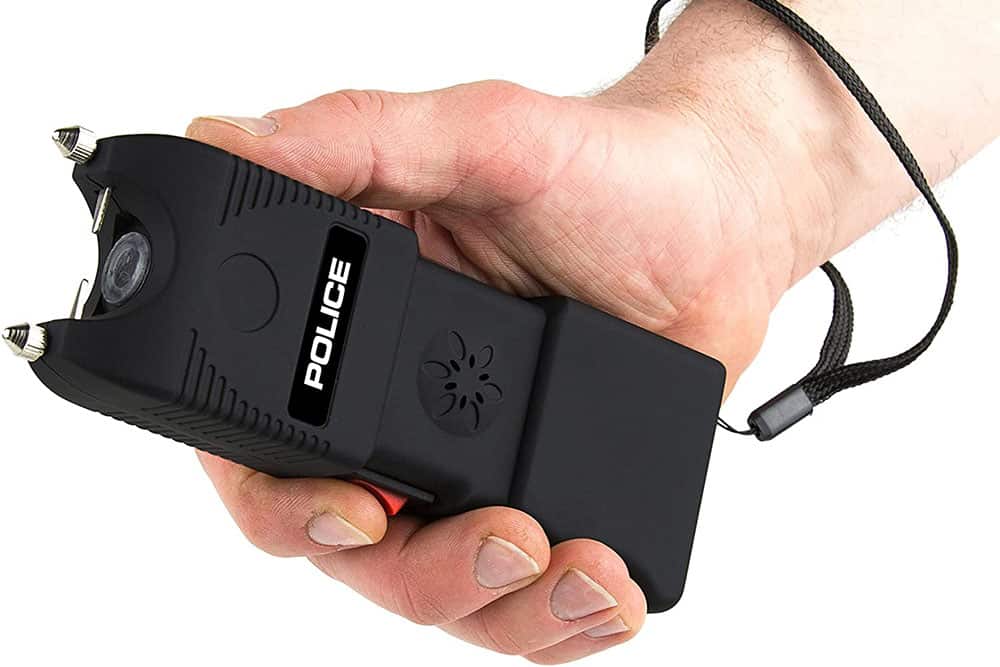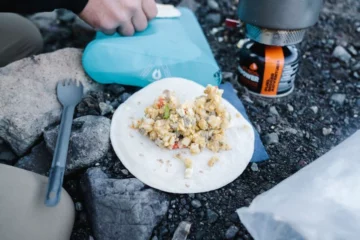Once the exclusive concern of soldiers and police officers, body armor has gone mainstream. And for good reason. With violent crime skyrocketing in most cities and more hunters than ever heading into the woods for deer and other game, it only makes sense that people would want ways to ensure they don’t fall victim to urban violence, or take a bullet meant for an elk.
There are numerous things you need to keep in mind when shopping for this type of personal protective clothing, including the type of threat you anticipate having to defend against, your budget and more. Below we have compiled a list of 10 things to consider when buying body armor.
1: NIJ Protection Rating
NIJ stands for the National Institute of Justice (1). It is an arm of the US Department of Justice and the only nationally recognized arbiter of body armor protection levels. The NIJ assigns a protection level to each piece of body armor sold. Those levels are: IIA, II, IIIA, III and IV. In short, the higher the designation the greater the degree of protection.
- Level IIA armor stops 9mm and .40 ammunition fired from short-barrel handguns but will not provide protection from rifle shots.
- Level II armor stops 9mm FMJ (Full Metal Jacket) and .357 Magnum rounds from short-barrel handguns, but again, no rifle protection.
- Level IIIA armor will stop 9mm FMJ (2) and .44 Magnum rounds from longer barrel handguns but, like IIA and II, it will not provide protection from rifle shots.
- Level III armor will stop everything Level IIIA will stop plus 7.62mm FMJ lead core rifle ammunition.
- Level IV armor is the highest level of protection and has been tested to stop .30cal steel core armor piercing rifle ammunition.
2: Threat Level
Now that you understand the different NIJ protection levels you need to determine which one is right for you. In essence, this will all come down to figuring out what type of threat you anticipate facing. So, first determine whether the likely threat is close-in or distant. And then figure out what type of rounds are likely to be fired your way.
If you are a private security officer providing close protection, something that stops handgun rounds should suffice. On the other hand, if you are a hunter a vest that stops handgun rounds only isn’t going to do it for you. You’ll need level III or IV in order to protect yourself from stray rifle shots.
3: Fit
If your body armor is loose and flopping around on you there is a chance it may leave key parts of your torso exposed, which would negate the point of having it in the first place. Therefore, it’s crucial that you get body armor that fits you properly. The right fit in this case means it stays close to your body regardless of what you’re doing, it doesn’t ride up and poke you in the chin when you sit, and it does not interfere with your ability to perform whatever tasks need performing.
4: Comfort
Just because something seems like it would fit like a bespoke suit doesn’t mean it will be comfortable, and comfort is important. Especially if you have to wear your body armor for extended periods of time. If it’s not comfortable you may be tempted to take it off to give yourself a break. Or, you may be distracted and fidgeting with your body armor when someone goes after the person you are supposed to be protecting.
5: Concealability
For forward deployed forces it does not matter a whole lot if people can see their body armor. But that is not the case for everyone. If you are a private security officer providing close protection (3) for VIPs you don’t want to be advertising your bulletproof vest to the world. When a would-be assailant sees your soft armor vest they also see the areas that are not protected and can target them. On top of that, close protection is a job that requires discretion. Most CP professionals are required to look the part, and that often means a suit and tie. Not a t-shirt and an SPCS vest (4).
6: Maintenance
It may be able to stop a .44 magnum round or a rifle shot, but your body armor is not indestructible. You need to read the care instructions that come with it and perform whatever care and maintenance tasks are recommended. If your body armor suffers wear and tear damage or becomes dirty it may not perform as expected when called upon.
7: Cost
The cost of body armor encompasses a broad financial spectrum. That which provides the lowest level of NIJ protection costs perhaps $300-$500 or more, while a vest that uses ceramic plates to stop rifle shots can cost several times as much. This is one instance, however, where trying to save money could cost you your life. If, for instance, you need something to stop rifle fire (NIJ Level III or Level IV) but you decide to save money and buy Level IIA body armor, when that rifle fire comes you will be defenseless. Figure out what you need and spend what you need to spend.
8: Weight
Today’s body armor is not going to weigh 70 lbs like a medieval suit of armor, but it can get pretty heavy, particularly when steel plates are involved. That said, soft body armor can weigh anywhere from 1 to 5 lbs, while steel plate armor may weigh as much as 10 lbs, sometimes a bit more.
9: Mobility
There are not many people who need body armor who sit around all day doing nothing. Usually those who need this kind of protection are forward deployed forces, SWAT team members, close protection private security officers, hunters and the like. All people to whom mobility is crucial. Therefore, it’s vital that your body armor does not interfere with your ability to move about freely. Of course, even in a best case scenario your body armor is going to slow you down a bit. The goal then is to obtain optimal protection with as little physical interference or drag as possible.
10. One More Thing
Don’t kid yourself or be misled by marketing. If you get shot while wearing body armor it’s going to hurt. A lot. If the body armor did its job then you won’t have a hole in you and bleed out onto the sidewalk or forest floor. But it’s not going to feel good. The force may even fracture a rib or two. One thing you shouldn’t have to worry about, however, is dying from blunt force trauma (5), as studies have confirmed that stories about that happening are just that, stories.
What About Women?
A lot of women want to know if it is possible for them to wear body armor, and the answer is “yes”. Of course. Most soft body armor is made to be form fitting, but there are also manufacturers who make soft body armor to accommodate specific bra sizes. However, there are limits to what’s available. Particularly busty women may need to contact manufacturers directly and see if they will create a custom size for them. Some will, some won’t.
When it comes to hard plate armor – that stuff designed to stop rifle ammo – the situation for women gets murkier. Plate armor is designed to diffuse the forces it absorbs evenly across the plate. To do this it needs to sit as flat as possible against the torso.
For women with small-ish breasts this is not usually a problem, and there are many women in combat roles today who wear plate body armor on a regular basis. Large breasts, however, complicate things and make it difficult to obtain that flat, or near flat, fit necessary to effectively diffuse forces from a rifle shot. The army is working on it, but they’re not there yet.
A Brief History of Body Armor
Body armor has been with us for thousands of years. Early forms of armor were fashioned from wood, leather and even bone. By about 1,000 BC the Greeks were using an early form of plate armor fashioned from iron, and of course, the Romans later expanded on and refined that type of armor to cover much of the torso and shoulders.
Most Roman torso armor was fashioned from either bronze, iron, or steel and comprised of numerous strips held together with leather straps – so called “lorica segmentata” (6). The wealthiest generals often had form-fitting torso coverings complete, in some cases, with steel 6-pack. At around the same time the Roman Empire was at its height someone (exactly who is hotly debated) invented chainmail (7), which would end up seeing widespread use right up until the 16th century.
By the Middle Ages armor had evolved to what some would say was extreme lengths. Knights of the era often wore full suits of steel armor that provided coverage from the top of the head to the bottoms of their feet and typically weighed anywhere from 50-70 lbs. Such armor was extremely expensive, so the only way a common soldier might get his hands on it was to take out a knight in battle and take his armor as a spoil of war.
One thing all these various forms of armor had in common was the type of threats they were intended to defend against. Those threats mostly took the form of swords, spears and arrows. The invention of firearms changed all that and rendered most types of armor obsolete. It took the folks that produce armor a couple of hundred years to catch up.
The first patents for so-called “bulletproof vests” were issued in 1919, but these were crude devices. World War II saw the introduction of “flak jackets” (8) designed to stop shrapnel. But it wasn’t until 1971 when Kevlar was introduced to the world that body armor finally gained ground on the threat posed by bullets. At least in some circumstances. These days, besides Kevlar, DSM Dyneema (9) and Teijin Twaron (10) are also used in body armor, sometimes all in the same vest.
Today, body armor is more popular than ever with military personnel, front line law enforcement, private security officers, hunters and ordinary citizens living in crime ravaged cities all taking advantage of what these amazing articles of clothing have to offer.
The Bottom Line
Body armor has come a long way from the days when the ancients used to depend on bamboo and leather to protect them from swords and arrows. Today’s body armor is capable of stopping a rifle bullet or a .44 magnum from close range. If your work puts you in the line of fire, or you are concerned about winding up a victim of another hunter’s stray bullet, or you live in a city where violent crime is on the rise, body armor may well be the difference between life and death. We hope you found the above information useful in helping you determine the right body armor to suit your needs.

